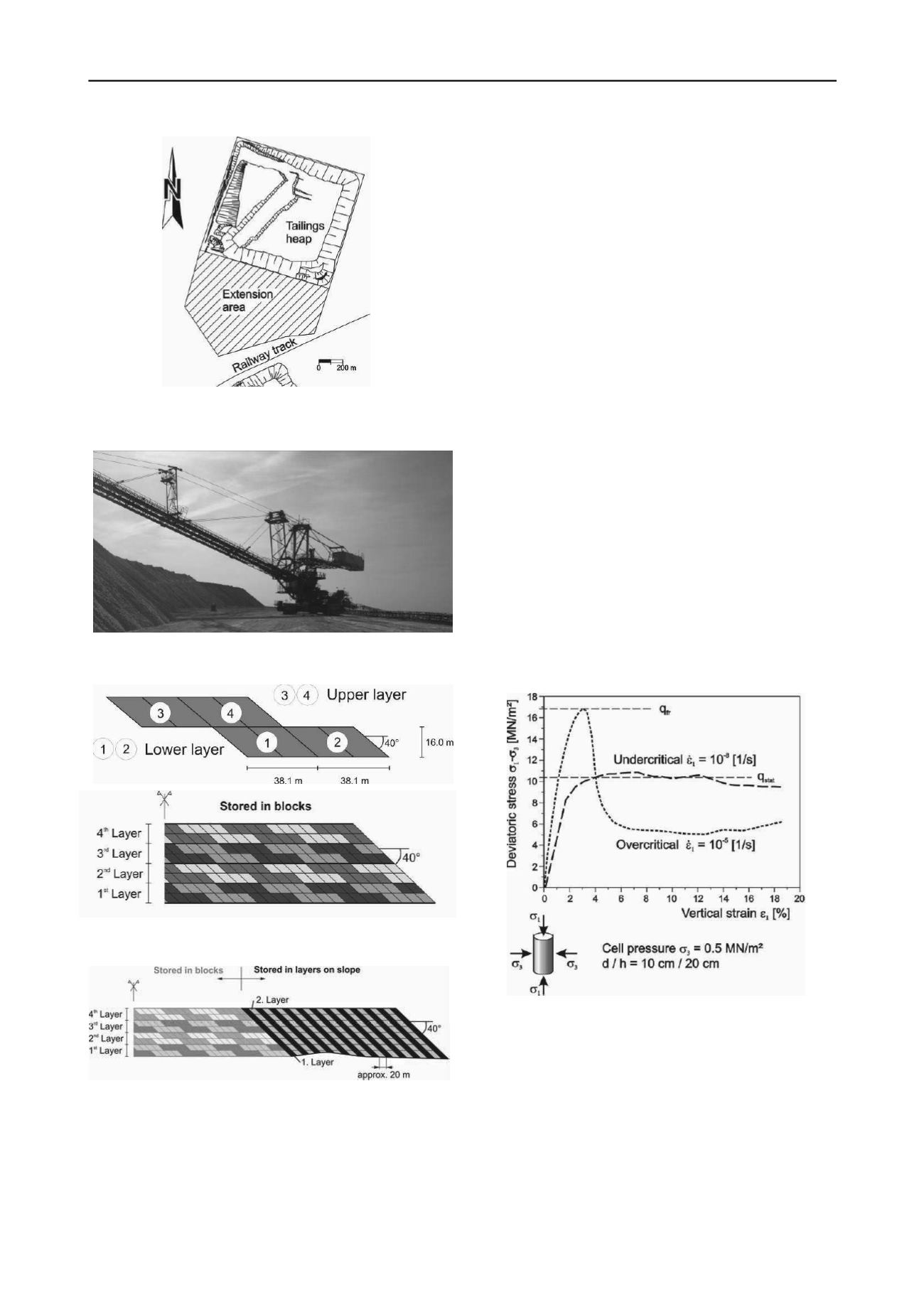
2028
Proceedings of the 18
th
International Conference on Soil Mechanics and Geotechnical Engineering, Paris 2013
Figure 2. Site plan of the project.
Figure 3. Spreader on a heap.
Figure 4. Schematic procedure of the block storing method.
Figure 5. Schematic storing with layers on the slope.
The project area is situated in a glacial plain with a rather flat
ground surface. The soil is horizontally stratified. At the surface
a 5 m to 10 m thick layer of sand and marl glacial deposits was
investigated. Below the sand and marl deposits a 50 m thick
layer of quaternary sand with loose density was found, followed
by a 130 m to 150 m thick layer of Rupel Clay and dense sand
with varying layers of silt. At a depth of approximately 200 m
below the surface the new red sandstone begins. The
groundwater level is about 5 m below the surface.
3 MATERIAL BEHAVIOUR OF GRANULAR ROCK
SALT
The material behaviour of granular rock salt is characterized by
a distinctive time and stress dependence. Initially fresh granular
rock salt has a non-cohesive texture. After a short period the
loose, granular rock salt converts into a cohesive texture with a
high strength (Ankes 1972). The salt material attains a shear
strength with a friction angle of φ’ = 50° and a cohesion of c’ =
850
kN/m²,
as
well
as
a
stiffness
of
E
s
= 2,500 MN/m². The material behaviour of the granular rock
salt is strongly dependent to the deformation rate. High,
overcritical deformation rates lead to high strength and stiffness
of the rock salt and to brittle fracture. Small, undercritical
deformation rates lead to minor strength and stiffness and to a
plastic creep without fracture.
Directly after storing the granular stockpiled material has a
density of ρ = 1.4 to 1.5 t/m³. Due to the atmosphere, chemical
processes and the pressure because of the increasing covering
the granular stockpiled material in the core of the heap
transforms nearly into solid body.
Under constant deviatoric stress the stockpiled material presents
a constant creep behaviour despite a huge strength. The material
behaviour of stockpiled material is strongly dependent on the
state of stress and of the deformation rate. Figure 6 shows the
results of two strain controlled triaxial tests on specimen of
stockpiled material, obtained from core drillings from the top of
a heap. For both tests a cell pressure of σ
3
= 0.5 MN/m² was
specified.
Both
deformation
rates
vary
by
the
factor 1,000.
Figure 6. Typical results of strain controlled triaxial tests on stockpiled
material samples.
The sample with the higher, overcritical deformation rate of
dε/dt = 10
-5
1/s presents the usual material behaviour on high
deformation rates. After the peak stress q
fr
follows a deep drop
of the deviatoric stress (brittle fracture). The sample with the
lower (undercritical) deformation rate of dε/dt = 10
-8
1/s does
not collapse. The sample creeps under a constant deviatoric
stress q
stat
.
On the left in Figure 7 is shown the specimen after the test with
undercritical deformation rate. On the right is shown the
specimen after the test with overcritical deformation rate.


